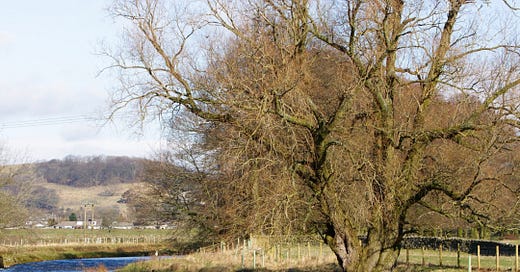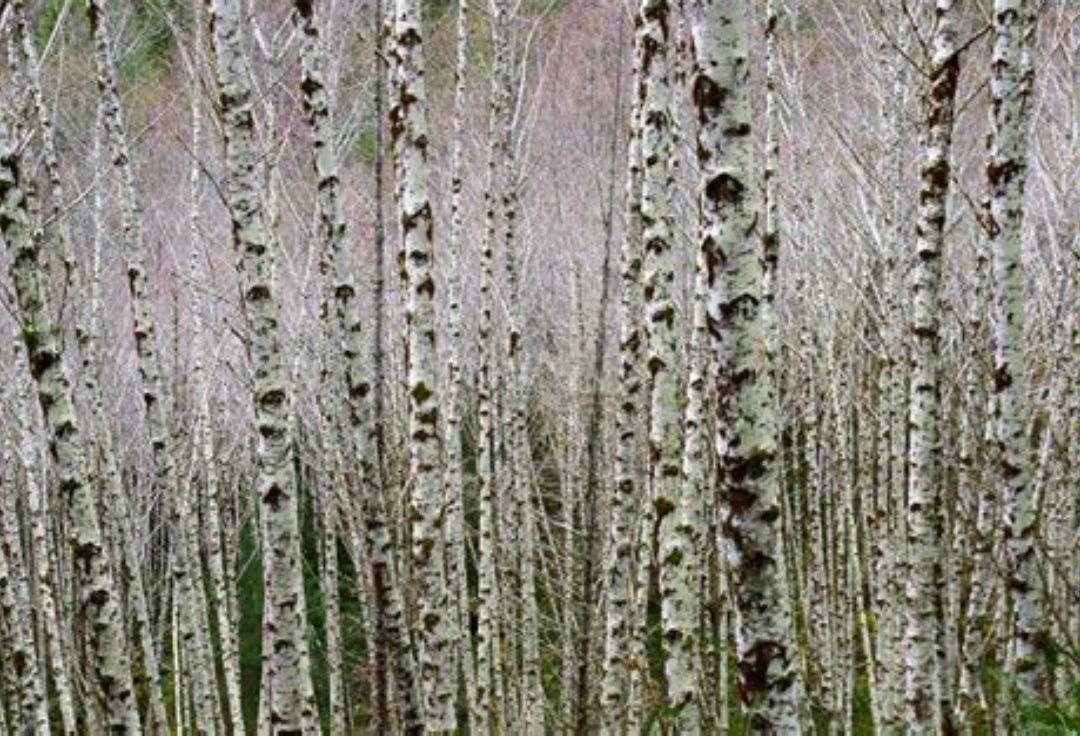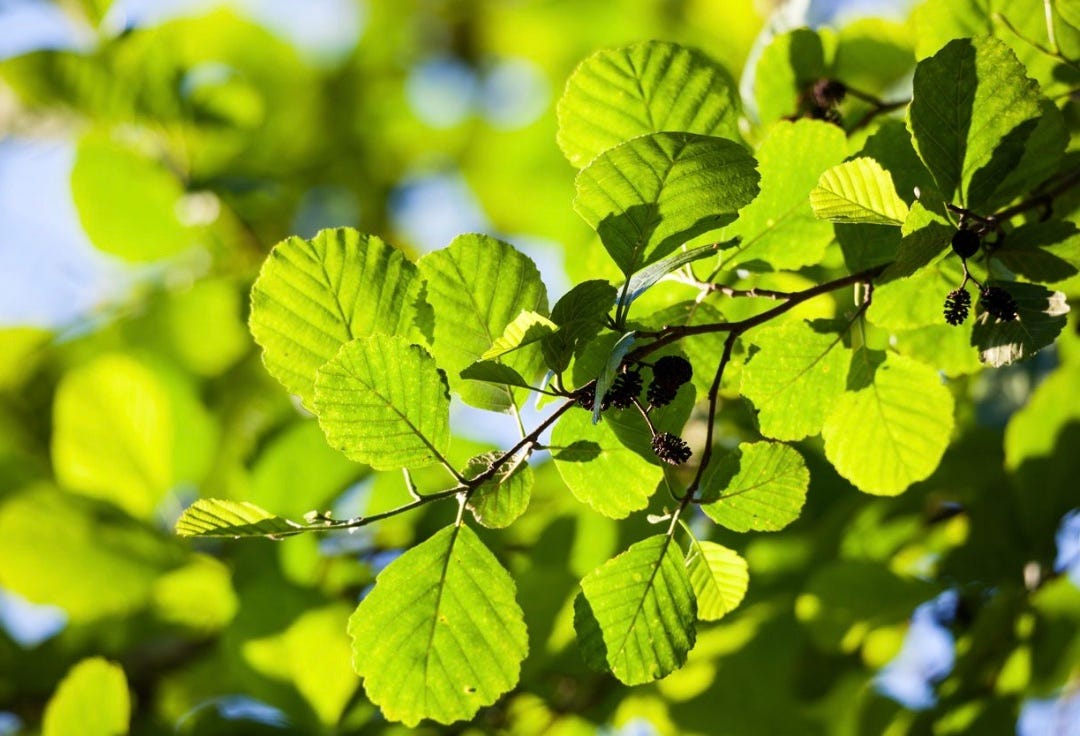First Encounters
I don’t remember the first time I saw an alder, but I do remember the first time I truly noticed one. It was summer in Killarney National Park, and I was walking with a group of fellow coordinators from the conservation group Groundwork. We were deep off the beaten track, in a place where neither walkers nor rangers ventured. To get there, we had to cross a raised bog—delicately, carefully—where one misstep could have grave consequences. Finally, we reached our destination: a remote valley called Glaisin na Marbh—The Little Green Stream of the Dead.
The name hung over the land like mist through the trees, the shade beneath them feeling all the heavier for it. Of course, I had to dig deeper—no name in Ireland is given without reason. Soon enough, I found references to the Great Famine. Oral tradition tells of an old graveyard here, and during those dark years, several families who lived in this now-abandoned valley perished, adding to its somber legacy. Yet, despite its name, this place is full of life, home to some of Ireland’s most untouched native oak woodlands. And within it stands an alder—one unlike any I had ever imagined.
We stepped beneath the oaks, their understorey thick with holly, and made our way through the forest until we came to a clearing. There, like a sentry, stood an immense alder. Alders rarely command such presence, but this one did. It was a testament to the vitality of this place, shaped by shelter, soil, and water—a confluence of elements that had allowed it to reach an extraordinary size.
Alder is not a tree of dry places. It thrives where other trees might falter, along riverbanks, at the edges of lakes, and in marshy ground. We can use trees as signs for reading a landscape, and so I did with this alder. Although it was the height of summer and the days were long and hot, I was not surprised when I looked beneath my feet to find the ground there damp. Unlike most woods, Alder does not decay in water; it hardens, becoming stronger, a paradox of resilience in what should be its undoing. Incidentally, the foundations of Venice rest on Alder.
So, not unlike the Birch that we explored at the start of this series, alder is at home in the wet places and in the marginal places. And just like the birch it opens the way for other species, greater ones like ash and oak to make their first steps into a new area.
Yet Alder is also a tree of fire. When freshly cut, its wood bleeds red, a startling contrast to its pale bark. This made it a tree of myths and omens—associated with warriors, shapeshifters, and the unseen world. In ancient Ireland, it was said that to cut down an Alder was to invite misfortune, for it was a sacred tree, a guardian of the waterways.
Identifying the Alder Tree
The Alder tree (Alnus glutinosa) is easy to identify. Its rounded, serrated leaves have a slightly notched tip, and unlike many other trees, they remain green late into autumn before falling. One of its most distinctive features is that it is one of the few deciduous trees to produce cones—small, woody, dark brown structures that persist on the branches through winter, releasing tiny winged seeds. In early spring, look for its long, dangling catkins, which appear before the leaves and give a golden-purple hue to the tree. The bark is typically dark and often develops moss or lichen, adding to its unmistakable presence in damp woodlands.
A Tree of Myth and Magic
In Irish folklore, it was a tree of the fairies and the Otherworld, often found near sacred wells and enchanted lakes. Some believed the spirits of the land lived within it, and that to cut one down was to risk their wrath.
In the old stories of Ireland, Alder was known as a warrior’s tree. The Fianna, those legendary bands of hunters and fighters who roamed the wild places of Ireland, would have known it well. Its wood, though too soft for building, was prized for making shields—light yet strong, capable of withstanding the blows of battle. Alder thrived at the edges of rivers and lakes, the very places where the Fianna hunted and camped.
In the Ogham alphabet, Alder is called Fearn, a name that speaks of strength, endurance, and connection. It was seen as a tree of passage, a marker of thresholds—perhaps because it so often grew on riverbanks, the very edges of known land.
Alder’s Role in the Land
Alder does not just survive in wet ground—it transforms it. It is one of the few trees that can fix nitrogen in the soil, enriching the land around it. Along riverbanks and bogs, Alder’s roots knit the earth together, preventing erosion and offering shelter to countless species of birds and insects. Whenever I see an alder growing at the edge of a riverbank, with part of its root exposed and reaching over the water, I see the perfect home for the kingfisher, and I feel grateful for that. At a place called the Mill along the Rye river in Leixlip there are several alders growing just like this, and so, unsurprisingly, it is a place I most often see a kingfisher flashing past.
Where alder grows, life follows. Its catkins provide early pollen for bees in the hungry months of late winter, and its leaves, when they fall into the water, nourish fish and aquatic life. The presence of Alder signals a thriving ecosystem.
The Future of Alder
Unlike the Ash, Alder does not face a single great threat, but it is still vulnerable. Across Ireland, wetlands are being drained, riverbanks eroded. The places where Alder thrives are disappearing.
Yet, it remains. It grows where others cannot, holding the land together, feeding the water, offering its wood, its shade. It is a tree that does not demand attention, but if you look for it, you will find it—rooted in the half-seen places, standing in stillness.
Alder is a reminder that strength is not always in height or hardness, but in adaptability, in quiet resilience. It is a tree of the in-between, a tree that belongs to neither one world nor the other, but to the space between them. And perhaps that is why it has endured.
Perhaps that is why it always will.









Yay, great read! And now I see the resemblance between the Gaelic Fearn and the French Vergne. When I visited the part of France that was my ancestors' home, I discovered it was a marsh... where alders grow. Hence our family name. Everything makes sense. I love that it has various means of reproduction, the catkins and the cones. That it is a quiet warrior, too, I must say. Thank you, Daithí 🙏